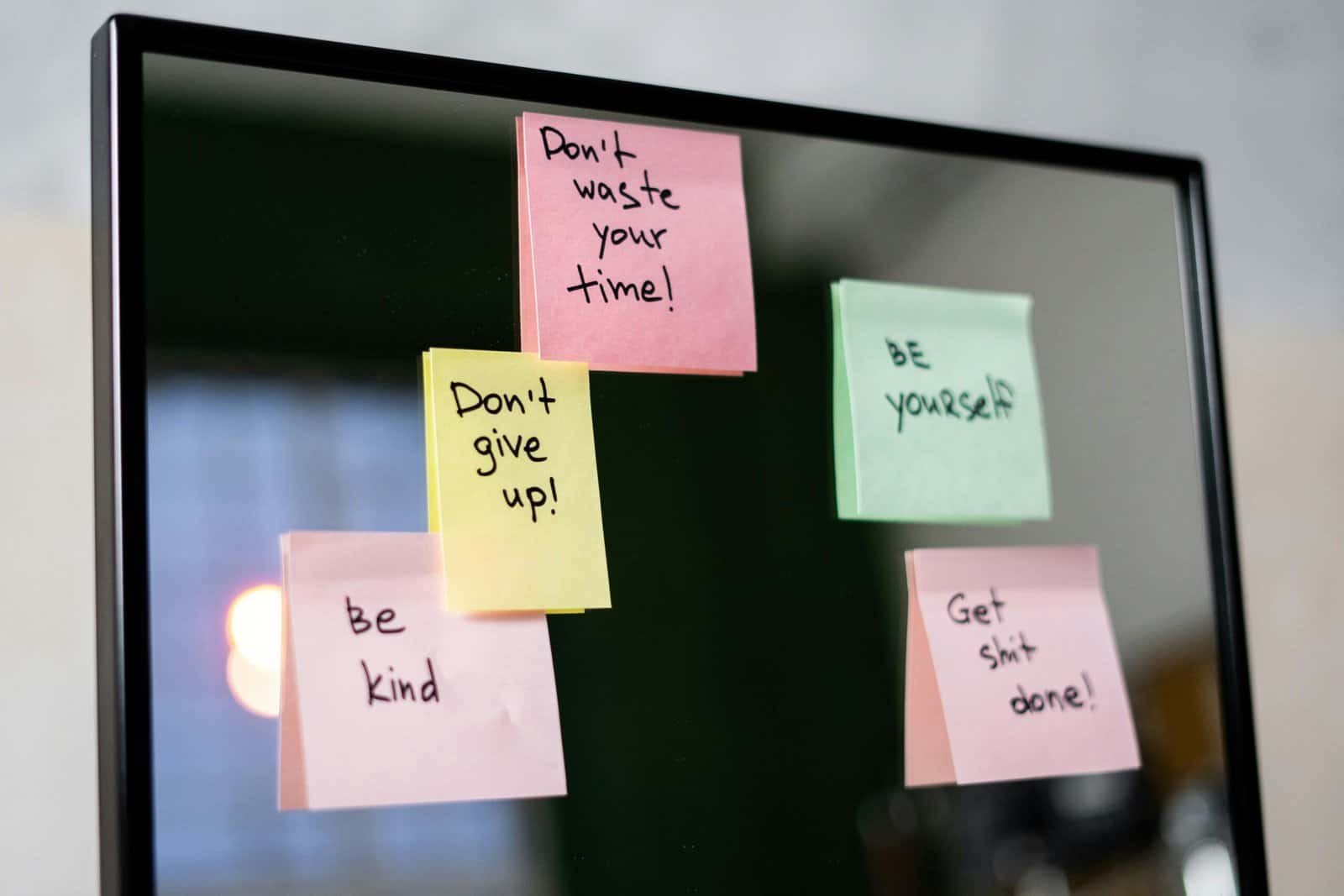Are you struggling to keep your energy and focus when freelancing feels overwhelming and uncertain?

How Do I Stay Motivated When Freelancing Gets Tough?
Freelancing has seasons: some are high-energy and rewarding, while others test your patience and resolve. You can learn to manage the low phases so they don’t determine your future, and you’ll find practical ways to keep momentum even when things feel heavy.
Why this matters for you
When your motivation drops, your income, reputation, and well-being can be affected. You’ll benefit from practical strategies that help you maintain consistency, rebuild motivation quickly, and protect your mental health.
Understand the nature of freelance motivation
Motivation is not a fixed trait; it’s a resource that fluctuates based on context and choices. Recognizing that motivation comes and goes helps you treat it like something you can influence.
The difference between intrinsic and extrinsic motivation
Intrinsic motivation comes from enjoyment or internal purpose, while extrinsic motivation comes from external rewards like money or recognition. You’ll be more resilient when you cultivate both, because each supports the other in different circumstances.
Why motivation drops in freelancing
You may lose motivation because of isolation, unpredictable income, difficult clients, or boredom from repetitive work. Identifying the specific reason in your situation gives you a clearer path to respond.
Diagnose what’s draining your motivation
Before you act, take time to identify which factors are contributing to your slump. Accurate diagnosis prevents wasted effort and helps you choose the right interventions.
Common symptoms and probable causes
You might procrastinate, miss deadlines, or feel a constant low mood. These symptoms often trace back to overwork, unclear goals, lack of social support, or financial stress.
| Symptom | Likely cause | First action |
|---|---|---|
| Procrastination | Overwhelm or unclear tasks | Break tasks into 25–90 minute blocks and pick one small action |
| Chronic fatigue | Poor work-life balance or sleep | Set firm work hours and prioritize sleep hygiene |
| Dwindling client leads | Weak marketing or inconsistent outreach | Schedule 3 outreach activities per week |
| Low creativity | Repetitive work or burnout | Schedule a creative “sandbox” session with no client pressure |
| Anxiety about money | Irregular income or lack of safety net | Build a short-term budget and an emergency fund target |
How to take a quick inventory
Spend 15–30 minutes listing what’s changed recently, your current goals, and your top stressors. You’ll gain clarity and reduce the overwhelm that often feeds demotivation.
Reframe and reset your goals
Vague or overly ambitious goals are motivation killers, while clear, achievable targets can create immediate forward motion. You should treat goal-setting as a flexible, iterative process.
Use the SMARTER approach (adapted)
Make goals Specific, Measurable, Achievable, Relevant, Time-bound, Evaluated regularly, and Readjustable. You’ll stay accountable without feeling trapped by rigid plans.
Short-term, mid-term, and long-term goals
Break goals into immediate wins (today/this week), mid-range targets (this quarter), and long-term vision (1–3 years). You’ll regain momentum faster by celebrating short-term wins and checking progress frequently.

Build daily habits that sustain motivation
Habits are the scaffolding of consistent output and emotional stability. If you create small, repeatable practices, you’ll reduce decision fatigue and free up willpower for more creative tasks.
Morning and evening routines
A short morning routine that includes a priority list and a moment of focus helps you start with intention. An evening routine that reflects on achievements and sets tomorrow’s top three tasks prevents rumination and sets you up for success.
Focus blocks and breaks
Work in focused blocks (25–90 minutes depending on your attention span) followed by short breaks to restore mental energy. You’ll be more productive overall and less likely to burn out with this rhythm.
| Habit | Why it helps | Practical tip |
|---|---|---|
| Top-3 task list | Keeps you focused on high-impact activities | Choose three tasks you must finish each day |
| Time blocking | Reduces task-switching and decision fatigue | Reserve blocks for prospecting, client work, admin |
| Physical movement | Boosts energy and mental clarity | Do a 10-minute walk or stretch between blocks |
| Weekly review | Maintains momentum and course-corrects | Spend 30–60 minutes reviewing wins and planning |
Improve your environment
Your workspace and social environment shape how motivated you feel. Small environmental changes often produce outsized improvements in focus and mood.
Optimize your physical workspace
Remove distractions, ensure good lighting, and have ergonomic seating to make work less physically draining. You’ll find you can sustain intense focus and comfort for longer periods.
Create social and professional support
Working in isolation is draining; you’ll benefit from peer accountability, co-working sessions, or a mastermind group. Social pressure and encouragement are powerful motivators that help you stay consistent.

Manage your energy, not just your time
Time management is necessary, but energy management is essential for maintaining motivation. When you align work to your natural energy cycles, you’ll get more done and feel better doing it.
Map your energy peaks and valleys
Track when you feel most creative, analytical, or social during the day for a week. Once you know your peaks, schedule your highest-impact tasks when you’re at your best.
Balance task types by energy level
Reserve creative or client-facing work for high-energy windows, and routine tasks for low-energy periods. You’ll protect your peak focus and avoid forcing difficult tasks when you’re drained.
Protect your finances to reduce anxiety
Financial instability is one of the biggest motivation drains for freelancers. Practical financial planning creates psychological safety and reduces the constant stress that undermines creative work.
Build a safety net and predictable cash flow
Aim for a basic emergency fund and create a minimum monthly income target to cover essentials. This reduces existential anxiety and lets you choose clients more strategically rather than from desperation.
Diversify income streams
Consider retainer clients, passive products, or small recurring services to smooth income. You’ll find the peace of predictable revenue eases motivation dips dramatically.

Keep client relationships healthy
Difficult client interactions can sap your energy and enthusiasm quickly. You’ll stay motivated when you set clear boundaries and manage expectations proactively.
Use clear scopes and firm contracts
Define deliverables, timelines, and revision limits before starting work. This prevents scope creep and reduces friction that often kills motivation mid-project.
Learn to say no gracefully
Turning down a bad-fit project protects your time and energy. You’ll breathe easier and be able to focus on higher-value work when you decline opportunities that don’t align with your goals.
Reignite passion for your craft
Sometimes low motivation stems from losing interest in the type of work you do. You’ll rediscover enthusiasm by intentionally experimenting and learning.
Schedule regular skill-building
Treat learning as a priority rather than a nice-to-have. You’ll feel more engaged when you invest time in projects that develop your capability and open new opportunities.
Take on passion projects
Work on personal projects or pro bono work that remind you why you loved the field in the first place. Passion projects can reignite intrinsic motivation and lead to unexpectedly valuable client work.

Use quick mood and motivation boosters
When you need immediate uplift, small, repeatable tactics can help you regain momentum quickly. These are not long-term solutions, but they help you survive rough patches.
10 quick motivation boosters
- Stand up and stretch for two minutes to reset your body.
- Write down one micro-task and complete it within 10 minutes for quick satisfaction.
- Call a supportive peer for 10 minutes of encouragement.
- Change your environment by moving to a café or different room.
- Review a client testimonial to remind yourself of impact.
- Listen to a 5–10 minute energizing playlist.
- Do a short breathing exercise (4-4-4) to steady your nerves.
- Remove one item from your to-do list permanently by delegating it.
- Revisit a past success to remember your capability.
- Break bigger tasks into a sequence of 5-minute actions and start one.
How to use these boosters effectively
Pick one or two of these that fit into your current schedule and use them as micro-resets rather than crutches. You’ll build a toolkit of quick responses that prevent long downward spirals.
Address burnout and mental health proactively
If demotivation persists for weeks, you may be experiencing burnout or depression. You’ll need to treat these issues with compassion and appropriate professional support rather than relying only on hacks.
Signs that you need professional help
Persistent hopelessness, insomnia, inability to function in daily life, or severe anxiety are reasons to consult a mental health professional. You shouldn’t try to push through severe symptoms alone.
Practical self-care practices
Sleep, nutrition, movement, and social contact are foundational to mental health and creativity. You’ll see motivation improve as these pillars stabilize.
Use systems and tools to reduce friction
Automation and reliable systems remove small decision points that erode motivation over time. You’ll conserve willpower for high-value work if you lean on effective tools.
Tools and templates to consider
Project management systems, invoicing automation, proposal templates, and email sequences save you time and reduce mental load. Choose a handful of tools you actually use and streamline around them.
Simple system checklist
- Template for proposals and contracts
- Invoicing and payment follow-up automation
- Project checklist for each service you offer
- CRM or spreadsheet for lead tracking
You’ll maintain consistency and avoid small stresses that accumulate into big demotivators.
Create a motivation plan you can follow
A written plan gives you a repeatable process when motivation dips. You’ll respond to tough times with a playbook rather than ad-hoc decisions that may not help.
A simple weekly motivation plan
- Weekly review: Spend 30–60 minutes every Friday reviewing wins and setting priorities.
- Energy mapping: Note your energy levels for the week to refine scheduling.
- Outreach: Plan three touchpoints for business development.
- Learning: Block 1–2 hours for skill growth.
- Recovery: Schedule at least one full day off or a half-day unplugged.
You’ll reduce uncertainty and maintain a steady pace by following a consistent rhythm.
Example motivation checklist (use daily)
- Did I define today’s top three tasks?
- Did I work during my peak energy hours?
- Did I take regular breaks and move?
- Did I make at least one outreach or marketing effort?
- Did I rest properly last night?
Checking these items gives you fast feedback and structure.
Sample weekly schedule for maintaining motivation
A predictable week helps you manage stress and maintain forward motion. Adjust timings to fit your energy cycles and client demands.
| Day | Morning focus | Midday focus | Afternoon focus | Evening |
|---|---|---|---|---|
| Monday | Plan week and top-3 tasks | Client deliverables | Prospecting/outreach | Relax and short review |
| Tuesday | Creative/high-focus work | Client calls | Admin/operations | Skill-building |
| Wednesday | Client deliverables | Networking or co-working | Buffer for scope changes | Social time |
| Thursday | Content creation/marketing | Client work | Follow-ups and invoices | Light learning |
| Friday | Weekly review and planning | Low-energy tasks | Finish deliverables | Unplug early |
| Saturday | Optional passion project | Errands | Leisure | Social rest |
| Sunday | Light planning and reflection | Restorative activities | Prepare for week | Sleep optimization |
You’ll find consistency in this structure helps maintain motivation because you always know what’s next and where your energy should go.
When to take a break or pivot your business
Knowing when to pause or change direction is critical. You’ll avoid wasting time on strategies that don’t work and preserve your energy for opportunities that align with your goals.
Signs you should take a real break
If your work makes you physically ill, your relationships are suffering, or your quality of work drops dramatically, it’s time to pause. A planned break restores perspective and prevents long-term damage.
Signs you should consider pivoting
If demand for your core service consistently falls, or your interests have shifted substantially, a pivot may be appropriate. You’ll need a plan to test new markets and gradually move away from unsustainable work.
Maintain motivation with accountability and celebration
Accountability structures and small celebrations keep you engaged and reinforce positive behavior. You’ll be more likely to act when you share goals and recognize progress.
Accountability methods
Use a mastermind group, accountability partner, or public commitments to create external pressure. You’ll move faster when others are watching and supporting you.
Celebrate progress, not just results
Reward consistent effort and small wins to maintain long-term motivation. You’ll enjoy the process more and reduce the “all-or-nothing” thinking that kills momentum.
Wrap-up: a practical checklist to keep using
Keep a compact checklist near your workspace to use when motivation slips. You’ll be able to respond quickly and intentionally rather than reactively.
- Identify the main cause of your slump in 10 minutes.
- Do one small action that gives immediate feedback.
- Adjust your schedule to match energy peaks.
- Reach out to one supportive contact.
- Check finances and confirm a basic safety plan.
- Schedule a full day off within the next two weeks.
- Do one learning activity that excites you.
You’ll find that repeated use of this checklist shortens periods of low motivation and keeps your freelance career sustainable.
Final notes and encouragement
Freelancing will continue to present tough stretches, but your response determines how those stretches shape your career. You have tools, systems, and strategies to manage tough times, and with consistent practice you’ll become more resilient and effective.
If you want, you can pick three tactics from this article to try this week and track how they affect your motivation. Small, steady changes compound quickly, and you’ll see progress sooner than you expect.
